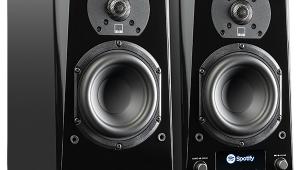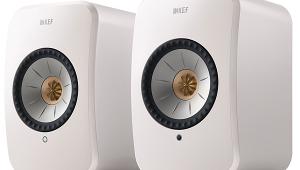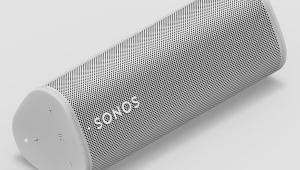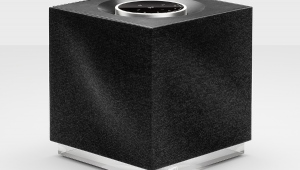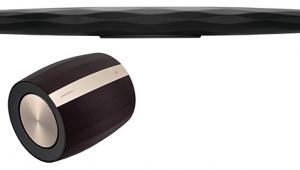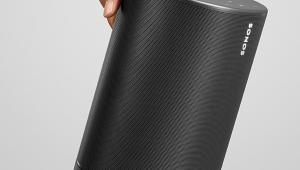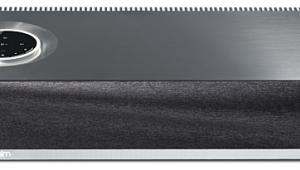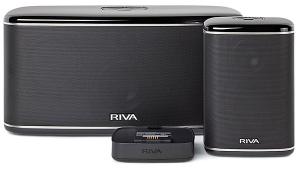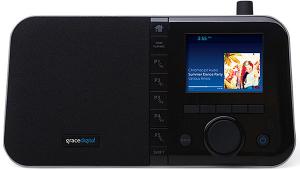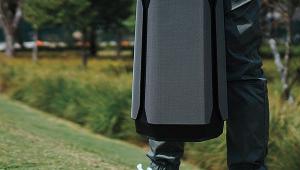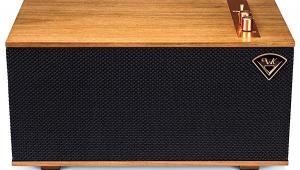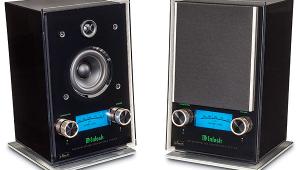Cambridge Audio Minx Air 200 Wireless Speaker System Page 2

In use, the Minx is seductive. It starts playing in either of its wireless modes automatically when triggered by a source device and defaults to the analog inputs when nothing is streaming. To shift from active streaming to the analog-ins, press the “X” button, and to mute the analog-ins, press it again. Though the Minx Air is supposed to work with iOS version 6.0 or later, I was able to stream from a 2G iPod touch with iOS 4.2.1 using both AirPlay and Bluetooth (but that’s no guarantee for other devices or iOS versions).
The Minx Air has a rich and flattering midrange. It’s engaging enough for foreground listening but forgiving enough to make lossy material palatable. The top end errs on the side of comfort, so jack up the volume and relax. Pushing the bass control enables bass guitars and kick drums to throb a little more. In fact, as long as the Minx wasn’t anywhere near a wall, I could push up the bass all the way and enjoy the groove. Stereo imaging from such a small device was limited, but dispersion from the BMR drivers was superb, no rigid sweet-spot positioning required.
Due to the limitations of AirPlay and Bluetooth, resolution is limited to 16 bits (CD quality) for uncompressed and lossless audio formats with further reductions for lossy formats. The unit does not support higher-resolution 24-bit formats except through its analog inputs. I look forward to the day when more wireless protocols, source devices, and rather expensive compact systems support true high-res audio, which I define as greater than CD quality.
To play 24-bit files—I can be stubborn that way—I found a couple of workarounds, both wired and wireless. I used an Astell & Kern AK100 music player with the Dave Brubeck Quartet’s Take Five (24/176.4 FLAC, HDtracks) serving as test material. The files played with a wired analog connection at full resolution and sounded great. With a Bluetooth link to the player, the files did reach the Minx Air, presumably resampled to a lower resolution, though they sounded crude and hissy. The wired connection was clearly preferable: Instruments seemed cleaner and closer, bass was deeper and fuller. Was Bluetooth at fault?

To find out, I converted the 24-bit FLACs to 16-bit WAV files and streamed them from an iPad 2. This time both Bluetooth and AirPlay approached the quality of the uncompromised wired connection. Switching from Bluetooth to AirPlay and back again several times was an exercise in hair splitting, though the cymbals were a little better resolved in AirPlay.
The takeaways: If you play high-res 24-bit files with a fancy media player or DAC, the wired connection will sound best, but AirPlay and Bluetooth at 16 bits can sound almost as good, with AirPlay having a marginal advantage. With Bluetooth, results will vary depending on the source device and whatever Bluetooth profiles and specs it supports.
Tweaky listening gave way to casual listening, this product’s true aim. Streaming TV with an iPad mini gave Minx a chance to deliver British TV dramas, with the bottom end of voices nicely filled out. It patiently played the same J-pop song over and over and minimized its brashness. After a full day of use, however, the plastic enclosure was noticeably warm, and the black metal back panel was downright hot.
The Minx was well suited to bedtime listening, playing hypnotic electronica and decorous classical, though its polite top end required a touch more volume than other gear I’ve used for this purpose. What a pleasant surprise it was to discover that all the top-panel buttons were gently illuminated with legends dark against a glowing background. A green LED shone out of the back, generating a green cloud of light against a wall, but none of the lights was bright enough to disturb the slumberer.
Cambridge Audio’s Minx Air 200 is a well built and great sounding one-piece compact system whose double wireless connectivity easily handles a wide array of mobile devices. That’s the way an increasing number of people want to listen to music, even those of us who maintain a primary component audio system. If you want music in the kitchen, music in the bedroom, music on the deck, music in the garage—basically, music anywhere with a power outlet—this $599 product is well worth the price. It certainly was a big hit in my home.
Audio editor Mark Fleischmann is also the author of the annually updated book Practical Home Theater (quietriverpress.com).
- Log in or register to post comments
